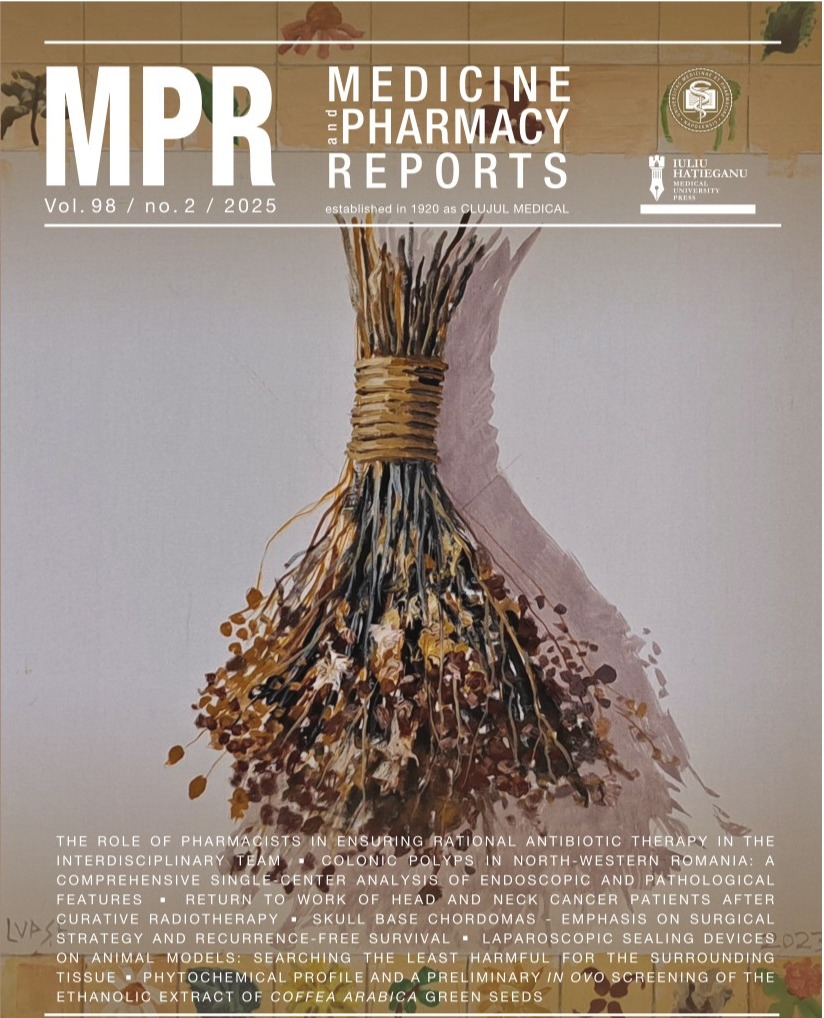The influence of different types of bevels on the fracture resistance of directly restored lower anterior teeth
DOI:
https://doi.org/10.15386/mpr-2773Keywords:
bevel, chamfer, fracture resistance, mandibular incisors, composite resinsAbstract
Background and aims. In recent years, dental trauma has been on the rise. The most common, regarding permanent dentition, are uncomplicated fractures (involving enamel or enamel and dentin) of the maxillary central incisors, followed by maxillary lateral incisors and mandibular central incisors. In anterior teeth, high impact stresses are frequently produced and because of this it is necessary that the restoration has a high fracture resistance. The aim of this study is to evaluate the influence of marginal cavity preparations (45° bevel and chamfer bevel) on the fracture resistance of teeth treated with direct composite resins.
Methods. For this study, 24 extracted mandibular incisors were used. All soft tissue debris and tartar were removed. During the study, the teeth were kept in saline to prevent dehydration. The teeth were divided into three groups of 8 teeth each. Group number 1 was used as a control and named C, in group number 2, named CH, incisors were prepared with a chamfer type of bevel, and in group number 3, named B45, incisors were prepared with a 45° bevel. After preparing all mandibular incisors, they were directly restored with nano-ceramic composite (Ceram.x® Duo, Dentsply Sirona). Subsequently, all three groups were fractured to determine the maximum compressive load using the Instron 3366 universal testing machine. To ensure a standardized fracturing process, all incisors were embedded in self-polymerizing acrylic resin up to the neck to replicate the conditions in the oral cavity.
Results. The Student’s T-test was employed for statistical analysis, revealing a statistically insignificant difference between the CH and B45 groups. Nonetheless, it was noted that the average values of maximum compressive loads in the chamfer bevel group were higher compared to those in the 45° bevel group, indicating its superior resistance to fracture. Additionally, the results of the fracture resistance test demonstrated that intact mandibular incisors are three times more resistant to fracture than mandibular incisors prepared and restored with dental bevels.
Conclusion. Intact teeth present a superior fracture resistance compared to teeth that have been subjected to trauma or carious processes, requiring coronal restoration; dental restorations made with a chamfer bevel marginal preparation withstand higher forces with improved fracture resistance compared to those made with a 45° bevel marginal preparation.
Downloads
Published
How to Cite
Issue
Section
License
The authors are required to transfer the copyright of the published paper to the journal. This is done by agreeing to sign the Copyright Assignment Form. Whenever the case, authors are also required to send permissions to reproduce material (such as illustrations) from the copyright holder.

The papers published in the journal are licensed under a Creative Commons Attribution-NonCommercial-NoDerivatives 4.0 International License.

